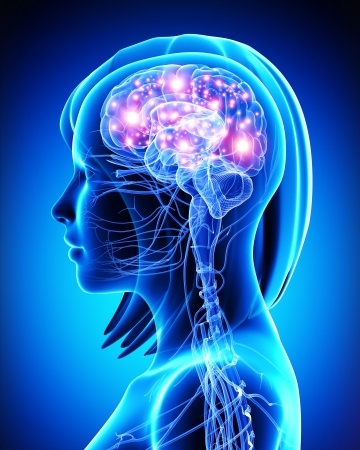The root word “Rheum” means mucousy or watery. This most likely refers to the puffy, inflammatory nature of the condition. Rheumatism is an outdated term originally referring to either rheumatic fever or miscellaneous joint pains.
Joint damage caused by Rheumatic joint disease progresses along three basic stages. In the first stage, the synovial membrane becomes inflamed. In the second stage, the membrane thickens. In the third stage, the cells of the membrane secrete enzymes that digest the surrounding bone and cartilage resulting in joint deformity. The role of pitta is predominant in this condition resulting in joint inflammation (redness and heat around the joint) as well as the digestion of the surrounding structures. Vata also plays an important role as seen in the variable nature of the inflammation and joint pain and the tendency of the condition to migrate from joint to joint around the body.
Rheumatoid arthritis is the most common of the rheumatic joint diseases. Other diseases in the same family include include: Systemic Lupus Erythemetosis, Polymyositis, Dermatomyositis, Sjorgen’s Sydrome, Scleroderma and Mixed Connective Tissue Disease.
Each of these conditions has a known or suspected autoimmune dysfunction as a part of its pathology. Autoimmune disease is a caused in by a combination of “tendency” and low ojas. Karma creates samskaras or tendencies within consciousness that are likely to manifest on psychological or physiological levels. Not all tendencies express themselves. Whether a tendency expresses itself of not depends upon both the strength of the tendency and the lifestyle of the person.
Rheumatoid Arthritis
Rheumatoid arthritis affects between 2-3 million Americans or about 1% of the adult population. It is 2-3X more common in women and usually begins between the ages of 20 and 50. There is a variant, called Juvenile Rheumatoid Arthritis (JRA) that affects approximately 50,000 children in the United States . JRA usually affects children below age 16. Rheumatoid arthritis tends to affect the hands and wrists most often but other joints in the body can be affected. Chronic inflammation leads to joint deformity. Secondary involvement of the connective tissues of the body leads to generalized stiffness which tends to be pronounced in the mornings.
Madhava Nidanam refers to acute rheumatism as “ambat”. Many other texts refer to the condition as “ amavata”. The two terms are the same with different spellings. The term ambat refers to air mixed with impure chyle. Hence, it is common to understand rheumatic arthritis as a condition of vata vitiation combined with ama.
The most common symptom of rheumatoid arthritis is joint pain. Common, possible secondary symptoms include fever, fatigue and loss of appetite.
Samprapti:
According to the Madhava Nidanam, the pathology is due to poor digestion resulting in ama formation in the stomach. Poor digestion results in poorly formed chyle (immature rasa ; a fluid produced by digestion in the intestines that is taken up by lymph vessels called lacteals and thus enters the lymph system). This poorly formed chyle is likened to mucilage and is stated to cause all of the varieties of this disease. All three doshas are vitiated in this condition. Deranged vata produces pain. Deranged pitta produces inflammation and heat. Deranged kapha produced rigidity.
Vata dosha is vitiated wherever there is pain in the body. Vata type pain tends to come and go. It may also migrate from place to place. When it mixes with pitta, there is inflammation. When the affected part itches, becomes rigid and feels like it is covered with a wet cloth, kapha is affected. Ama mixes with the doshas and settles into the joints.
In the joint, vyana vayu is responsible for joint motion. Apana vayu is responsible for the health of the bones. Thus, altered motion is a function of vyana vayu while joint damage is a reflection of apana vitiation. It is sleshaka kapha that is responsible for the synovial fluids. Vitiation of sleshaka results in excess fluid and swelling in the joint.
Chikitsa (Treatment)
It is always most important to normalize the function of the digestive system. By normalizing agni, ama is no longer produced. Ama that has been produced and is now stationed in the affected joints should be removed by purification programs such as pancha karma and the use of pachanas. Proper diet along with the appropriate use of dipanas assures that ama will not accumulate.
In the management of this condition herbs with the characteristics of being analgesics and anti-inflammatory are most important. The following are several important herbs in the management of rheumatic joint diseases.
Castor Oil (Eranda, Ricinus communis ): Castor oil has a sweet, pungent and astringent rasa , warm virya and pungent vipaka . It has heavy, oily and sharp qualities. Its actions include being a purgative and analgesic. It is best for treating vata . Regular use aggravates pitta and kapha . However, external use as a poultice may be used for all three doshas when combined with appropriate herbs. Poultices or oils may be applied directly to the painful joints. In arthritis, a small amount of castor oil may be taken daily for a few weeks. Long-term internal use is not recommended. Castor oil can aggravate inflammatory colon diseases ( pitta conditions) and is contraindicated in pregnancy.
Guggulu ( Commiphora mukul ). Guggul has a pungent and bitter rasa , warm virya and pungent vipaka . It is an anti-inflammatory, dipana and pachana . It is considered to be one of the best herbs for reducing ama from the joints and tissues of the body. It is considered excellent in the treatment of arthritis. It reduces vata and kapha but can aggravate pitta unless it is combined with cooler herbs such as gaduchi . Guggul is also renowned for reducing cholesterol levels, assisting in weight loss and acting as an anti-microbial.
Gaduchi ( Tinospora cordifolia ): Gaduchi has a bitter, slightly sweet and astringent rasa , warm virya and sweet vipaka . It is heavy and oily and it pacifies all three doshas . While having many uses, in the management of arthritis it is an effective anti-inflammatory and analgesic. This herb is often added to formulas with guggul in the treatment of pitta -type arthritis.
Nirgundi ( Vitex negundo ): Nirgundi has a bitter, astringent and pungent rasa , a warm virya and a pungent vipaka . It is light and rough. It is best for the kapha dosha but is also stated in some texts to pacify vata . It increases pitta . While having many uses, it is revered for its benefits in the treatment of rheumatic joint pains. It is a respected anti-inflammatory and analgesic, useful in arthritis, nerve pains and back pains.
Ginger ( Zingiber officinale ): Ginger has a pungent rasa , warm virya and sweet vipaka . It is light and oily and pacifies vata and kapha . While having many uses, in the management of arthritis, it is an effective analgesic and pachana . It may be applied to joints as a poultices or salve and taken internally to reduce ama . Research suggests that it inhibits prostaglandins and leukotriens, which are mediators of pain and inflammation. It has been well studied and found effective in reducing arthritic pain in 75% of those involved in the studies.
Turmeric ( Curcuma longa ): Turmeric ha a bitter rasa , warm virya and pungent vipaka . It is light and rough. While having many uses, in the treatment of arthritis, turmeric acts as an effective anti-inflammatory. As an alterative, it is beneficial in reducing impurities in the body. It may be applied topically or internally. Studies performed on turmeric show that it inhibits prostaglandin production and stimulates the production of cortisol. Both actions decrease inflammation. For vata and kapha -type arthritis, it works even more effectively when combined with cayenne pepper. Together, they have been found to reduce substance P from nerve endings. Substance P is a neurotransmitter involved in pain mediation.
Frankincense ( Boswellia serrata) : Boswellia has an astringent, bitter and sweet rasa with a slightly warm virya and pungent vipaka . This herb pacifies kapha and pitta but increases vata . The part used is a resin. While having many uses, in the management of arthritis it is an effective anti-inflammatory.
www.ayurvedacollege.com








